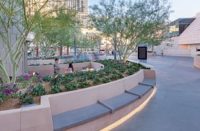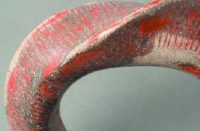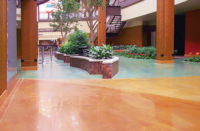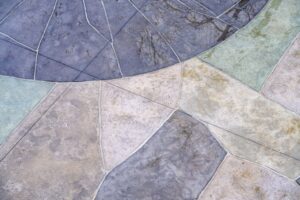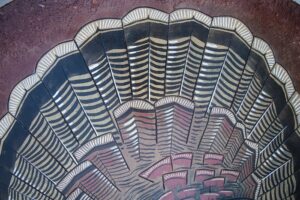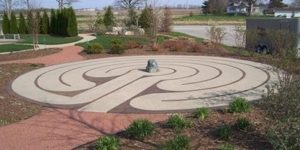
One day in March 1993, two best friends — 9-year-old Jonathan Sellers and 13-year-old Charlie Keever — went for a bike ride in the Palm City neighborhood of San Diego, Calif.
They never came home, and two days later their bodies were found in a brushy area along the Otay River. Eight years later, DNA evidence linked the murders with a man in prison for raping a woman. He was subsequently convicted of the murders and has been on death row since 2004.
The tragedy created a bond between the boys’ mothers, Milena Sellers-Phillips and Maria Keever. When Sellers-Phillips participated in the search for a murdered girl in 2010, the experience renewed her desire for a public memorial to Jonathan and Charlie.

Sellers-Phillips approached Greg Cox of the San Diego County Board of Supervisors. In 2012, the mothers and the county received approval and a $175,000 County of San Diego Neighborhood Reinvestment Program grant for a small memorial along the Bayshore Bikeway, on the southern edge of San Diego Bay in Imperial Beach. The California Department of Fish and Wildlife donated the site.
To design the memorial, Stephen Cast and Chuck Tucker of the San Diego County parks department worked with a decorative concrete master — Chris Klemaske, project developer for the Innovative Concrete Systems division of T.B. Penick & Sons Inc., of San Diego. In their hands, decorative concrete created a one-of-a-kind space for education, memory and healing.

System uses glass aggregate
Originally, Cast envisioned a concrete surface that would be saw-cut and stained. Then Klemaske showed Cast examples of Lithocrete, a patented exposed-aggregate concrete system T.B. Penick installs under license from another construction company, Shaw & Sons Inc., based in Costa Mesa, Calif.
From the subgrade up, the Lithocrete method specifies materials and methods for mixing, pouring and finishing a concrete job. It also includes additives and sealers formulated to control the alkali-silica reaction that can take place when using reactive aggregates such as glass. These materials and techniques allow the use of recycled, heat-fractured glass as a decorative aggregate — an element that appealed to Cast. The Lithocrete surface would also require less maintenance than a stained surface.

“The design process evolved from focusing on the boys’ deaths to a focus on the environment,” says Cast.
With input from Cast, Klemaske and the boys’ mothers, the design took the form of a nautilus shell with segments outlined in steel and filled with a gradated pattern of colored glass aggregate. “The gradation of color is something Lithocrete is known for,” Klemaske says.
A Fibonacci spiral was superimposed on the nautilus pattern. For the spiral, Klemaske suggested LithoMosaic, a system that is part of the Lithocrete suite. In the LithoMosaic process, the artist creates the design off-site, without time constraints, by gluing tiles to a sheet of mesh. After the tiles are embedded in the concrete, the mesh is stripped off.
Amanda Klemaske Conahan, a landscape architect and public artist, produced some options for the mosaic, and a design in glass tiles was chosen.
Mementos from mothers
When the mosaic was nearly finished, Conahan brought it to the T.B. Penick office and invited Milena Sellers-Phillips and Maria Keever to bring mementos of their sons to add to it.

“Amanda brought some materials we hadn’t expected — tumbled beach glass called ‘tears of the ocean’ and glow-in-the-dark tiles,” says Klemaske. Vidrepur (Castellón, Spain) makes the tiles, which glow blue for eight hours after exposure to light.
Together, Conahan and the mothers added meaningful elements to the mosaic spiral, including framed photos of the boys.
For seating, Cast chose Sedimentary Walls, another Lithocrete system, to surround the nautilus shell. Sedimentary Walls are constructed in layers with distinctive aggregate in each layer, evoking the appearance of sedimentary rock. Cast created a pattern of glass aggregate in the layers.
Volunteers hauled donated boulders to the site to provide additional seating. California Conservation Corps Crew 26 installed the boulders and paved a path with decomposed granite.
Because the memorial was on a sandy site near the bay, site preparation required some extra steps. For a stable foundation, the site had to be excavated 5 feet deep to allow for sufficient compaction of the soil. Epoxy-coated rebar was used, and the metal framework outlining the nautilus shell was made of surgical stainless steel.
The steel framework, fabricated by Jay Neis of Norfab Steel & Fabrication Inc. (Flagstaff, Ariz.), was placed on chairs on the rebar. Concrete was poured into each segment, and glass aggregate was distributed on the surface to create a color gradation in each segment.
The finished site has telescopes made by The Glass Eye, in Signal Hill, Calif., for viewing wildlife. Plaques identify nearby vegetation. The glow-in-the-dark tiles define the Fibonacci curve at night, creating a pathway that the mothers have described as “showing the way.”
The Jonathan Sellers and Charlie Keever Outdoor Education Activity Center serves as an outdoor classroom for nearby Bayside Elementary School and other schools. The U.S. Fish and Wildlife Service Educational Outreach Program also uses the center for outdoor classes. It provides a vantage point from which visitors can observe migratory birds that visit the nearby estuary.
Cast credits Klemaske with introducing many of the design elements and praises her emotional attachment to the project. “During construction, when one of the mothers couldn’t arrange for transportation, Chris stepped up and dispatched a limousine to ensure that both mothers could participate in the process,” he says.
“It’s a small project, but it’s significant in so many ways,” Klemaske says. “It’s just turned out really beautiful. It was everything they wanted it to be. I’ve worked on multimillion-dollar projects and tiny projects, but this was just one of those — it meant so much to be a part of it.”
In metal letters embedded along the line of the spiral are these words the mothers chose from an essay by environmentalist Rachel Carson: “There is something infinitely healing in the repeated refrains of nature — the assurance that dawn comes after night, and spring after the winter.”
Project at a Glance
Client: San Diego County Parks and Recreation Department
Decorative concrete contractor and general contractor: T.B. Penick & Sons Innovative Concrete Systems, San Diego, Calif. | www.tbpenick.com
Design and project management: Stephen Cast, RLA, and Chuck Tucker, San Diego County Parks and Recreation Department; Chris Klemaske, T.B. Penick & Sons Innovative Concrete Systems
Scope of project: A small area for environmental classes and public enjoyment along a bike path, conceived as a memorial to two murdered boys
Most challenging aspect: Creating a public memorial that would be meaningful to grieving families and be a recreational and educational asset to the community.
Products used: Lithocrete System 1 with glass aggregate, System 2 Sedimentary Walls, and System 7 LithoMosaic from Shaw & Sons Inc.; metal framework and lettering by Norfab Steel & Fabrication Inc., Flagstaff, Ariz.; glow-in-the-dark tiles from Vidrepur S.A., Castellón, Spain
